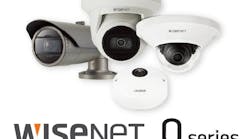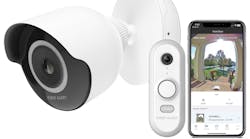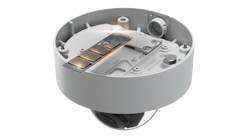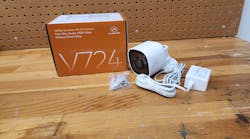There's always something new to discover at the security trade shows. A colleague of mine recently attended ISC West, and I asked him if he saw anything new while he was there. Obviously the answer was yes, but he was exasperated by the large amount of video technology on display, in particular video cameras. He had three questions:
1: How do you figure out which one to use?
2: What are the differences between them?
3: Which one is the best?
Video is a rapidly evolving technology, and vendors and products are literally flooding the market. Video technology also is being marketed through multiple channels: Retail; Distribution; Internet; Direct Mail; of course through professional security dealers and locksmiths. New players are also jumping on board such as electrical contractors and computer and network systems suppliers and installers.
Is the flood of product and would-be providers a phenomenon analogous to the Gold Rush, where the demand for equipment is not great enough to justify the supply? Or if it is a case of speculators with cash and a dream buying into offshore engineering and manufacturing firms who have product? Are our new trade partners, in particular China , endeavoring to flood the markets with junk in order to drive down prices and put the legitimate CCTV manufacturers out of business?
The fact that video is marketed and sold through multiple channels, and that the actual demand for video is growing presents both positive and negative influences as you try to sell video yourself.
The public is saturated in video. They watch TV; they go to movies; they buy DVDs. The images they watch are produced using the best equipment, under the best conditions. The video is extensively edited and is viewed in comfortable, low pressure environments.
Very few people have actually viewed security surveillance video; even fewer have sold these systems. The result is a lot of end-user disappointment because of unrealistic expectations or because of poor quality equipment installed by amateurs.
The best advice is to build up your knowledge on the subject, have an open mind to new technology, apply professional values and practices to the jobs to undertake, and pick your partners carefully.
This includes your distributor and the brand of equipment you use. Much low end video equipment is more or less orphaned gear because it doesn't really have parents. When it breaks (and it definitely will break), there will not be anyone to fix it or no warranty, or no parts available for it. So you'll throw it away.
However, you cannot always determine if a product is low-end based on its cost. You can more or less figure a $100 camera is low end, and if you get a couple of years out of it, that's pretty good. But a $1000 DVR could also be low-end, because it has more features for a lower price than similar models by other manufacturers, and that's because the cheap one is not built to last, is under-designed or uses marginal components.
Many video products are brands which are actually little more than an adhesive label attached to an item, and a desk chair and phone number somewhere in the world -- no factory, no technicians, no warehouse -- just a client who expects you to keep it running forever, because you installed it.
So stay with trusted and established vendors who hopefully have put in time and effort to build their brand, and will be there for you when you need them. I judge the new players (products) after doing some research and by the company they keep, meaning their distribution partners. Distributors frequently will be your first line of defense. They, like you, have a lot to lose if they are peddling junk.
We use the Pelco ICS310 CRV39A Camclosure because it is a general purpose problem solver which can be used indoor or outdoors. Pelco cameras offer an impressive feature set in each of its camera series, and this unit is configured to meet a wide variety of applications, for both new installs or as a loaner while the permanent camera is serviced. I like that it has an integral heater which can be easily de-activated, thereby reducing current draw. The varifocal lens allows adjusting the field of view. It's unusual to be in an environment where the client wants to restrict the field of view, but as a practical matter, some compromises must be made in virtually any static camera installation.
The camera uses conventional coaxial cable for connection to the system, which means the typical gearhead should easily understand the wiring. But a UTP balun can be easily added if you desire. And analog/IP converters can also be employed in a pinch. The only thing that differentiates IP cameras from their analog counterparts is the IP connectivity. The ICS310 has the essential image capturing capabilities.
Its .1 lux sensitivity, 50 db signal to noise ratio and 480 line resolution distinguish this camera from the pack. The camera puts out a hot signal and has AES and AGS backlight compensation and selectable gain. This means that you'll have a good chance of being able to tweak yourself out of a marginal situation.
No camera is perfect for all occasions; but the ICS310 is good for an awful lot of applications.
The Pelco ICS310 Series Camclosure ® integrated camera system incorporates a camera and lens package into a small, unobtrusive, medium-security enclosure.
The system is quick and easy to install in a variety of indoor or outdoor applications. It is ideal for residential, office, mall, hospital, school, parking garage, correction and detention, and other medium-security installations subject to vandalism.
Designed with a microporous membrane vent that equalizes the internal and external pressure differential of the enclosure, the vent offers enhanced ingress protection by repelling water and dust, yet allows for the free passage of vapors to prevent condensation within the enclosure.
The ICS310 Series can be equipped with three options. The ICS310-AP adapter plate allows use of a two-gang electrical box. The ICS310-SS sun shroud helps shield the unit from sun in outdoor applications. The the ICS310-COND allows the unit to be used in applications requiring conduit.
All models are designed for either 12 VDC or 24 VAC operation. Each unit is provided with two quick-connect mating connectors with leads: one for 12 VDC and one for 24 VAC. Just select the appropriate connector for your application, wire the leads to your power source with wing nuts, and snap the connectors together.
Camera options include 1/3-inch format CCD color imager (standard or high resolution) and black and white imager (standard resolution) with fixed focal length lenses of 2.9 mm, 3.6 mm, 6 mm, 8 mm, and 12 mm. Color camera lens options include fixed focal length without iris or 3-9 mm varifocal length with auto iris. Cameras with a varifocal lens have a 1/4-inch format high resolution CCD color imager.
Product Features include:
• Fully-Integrated Enclosure with Camera and Lens Package
• Microporous Membrane Vent for Enhanced Ingress Protection
• Meets NEMA Type 4X and IP66 Standards
• Rugged, Impact- and Vandal-Resistant
• Easy to Install
• Versatile, Aesthetically Pleasing “Track Light” Design, Mounts to Wall or Ceiling
• Tamper-Resistant Hardware
• Concealed Cabling
• 12 VDC or 24 VAC Operation
• Low-Temperature Operation to -50°F (-46°C); De-ices to -10°F (-23°C)
• Clear Viewing Window
• All Color Cameras Feature Digital Signal Processing
• Color and Black-White Cameras Available with 2.9 mm, 3.6 mm, 6 mm, 8 mm, or 12 mm Fixed Focal Lenses
• 3-9 mm Varifocal Lens with Auto Iris, Available with High Resolution Color Camera
• AC Line Lock with All Color Cameras in 24 VAC Operation
• All Lenses, Except Varifocals, are Pre-Focused at the Factory
• Optional Conduit Adapter Available
• NTSC/PAL or EIA/CCIR Camera Formats
For more information on Pelco products, contact your local distributor or Pelco, telephone 800-289-9100, web site www.pelco.com.





